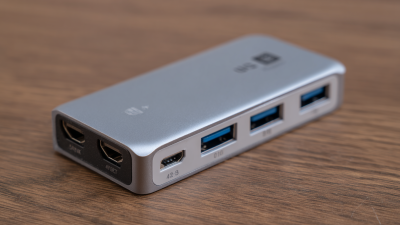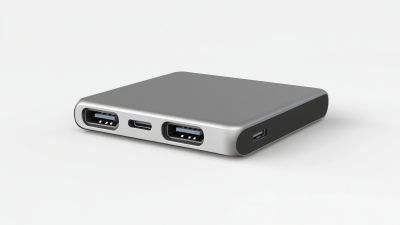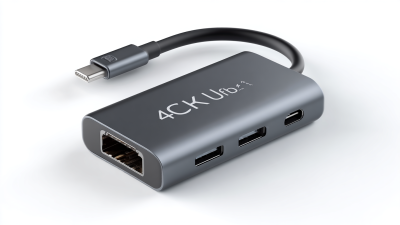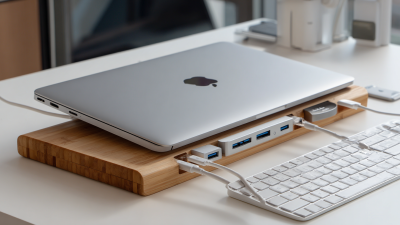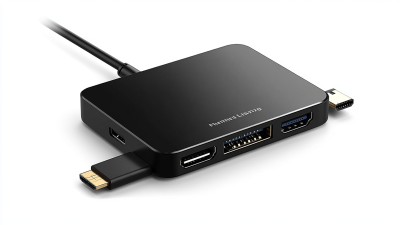
-
Home
-
Products
-
About Us
-
OEM&ODM
-
News
-
Contact Us
Inquiry
Form loading...

In today's fast-paced digital world, having a reliable and high-speed internet connection is essential for both work and play. However, many users face limitations with standard USB connections that can hinder their online experience. This is where the Usb Hub Ethernet Adapter comes into play, providing an innovative solution to unlock superior internet speeds. By combining multiple USB ports with an Ethernet connection, this versatile device allows users to connect various peripherals while enjoying stable and faster internet access. Whether you're streaming high-definition content, engaging in online gaming, or participating in video conferences, the Usb Hub Ethernet Adapter ensures that bandwidth limitations are a thing of the past. In this article, we'll explore the advantages of using this ultimate solution and how it can enhance your internet connectivity, making it an indispensable tool for anyone looking to optimize their digital lifestyle.

In today's digital age, maximizing connectivity is crucial for ensuring an optimal online experience. Utilizing a USB hub Ethernet adapter can significantly enhance internet speeds and provide a more stable connection. According to industry reports, connecting devices via Ethernet can deliver speeds that are up to 1000 Mbps, compared to the average Wi-Fi speed of around 50-100 Mbps. This is particularly beneficial for smart TVs and media streamers, which often struggle with unreliable wireless connections. By linking these devices directly to your router through an Ethernet cable, users can unlock the full potential of their internet service without incurring additional upgrade costs.
Moreover, the emergence of USB 3.0 technology has transformed how peripherals communicate with computers, offering higher data transfer rates and improved power management. When comparing USB 2.0 to USB 3.0, the latter boasts transfer speeds of up to 5 Gbps, making it a preferred choice for those looking to connect multiple external displays or devices seamlessly. This advancement is particularly advantageous for MacBook users, who previously faced limitations due to single-display configurations. By leveraging USB hub Ethernet adapters, users can connect multiple devices while enjoying high-speed internet access, thereby facilitating the modern multitasking demands of both work and home environments.
| Feature | Description | Benefits |
|---|---|---|
| High-Speed Connectivity | Supports Gigabit Ethernet for fast internet access | Ensures smooth streaming, gaming, and downloads |
| Multiple Ports | Includes several USB ports for device connection | Allows simultaneous connection of multiple devices |
| Plug and Play | No additional drivers needed for installation | Quick and easy setup without technical knowledge |
| Portability | Compact and lightweight design | Ideal for use with laptops during travel |
| Compatibility | Works with various operating systems | Ensures flexibility across different devices |
Setting up your high-speed internet connection with a USB hub Ethernet adapter can be a straightforward process, even for those who may not be tech-savvy. To begin, ensure you have the necessary adapter and a suitable USB port on your device. Start by connecting the USB hub to your computer or laptop. You may need to install any required drivers, which can typically be found on the manufacturer's website or included in the packaging.

Once the adapter is connected, use an Ethernet cable to link the adapter to your modem or router. Most modern devices will automatically recognize the connection, but you may want to check your network settings to confirm that you are connected to the correct network. A quick reboot of your device can sometimes help in establishing a stable connection.
After following these steps, you should be ready to enjoy seamless and high-speed internet access, enhancing your online experiences for work, gaming, or streaming.
When it comes to achieving optimal internet speeds, the comparison between Ethernet connections and Wi-Fi performance is vital. Ethernet connections are known for their reliability and stability, offering consistent speeds that are less susceptible to interference. Unlike Wi-Fi, which can be affected by distance, walls, and other obstructions, Ethernet provides a direct link to the router, ensuring that users experience minimal latency and maximum bandwidth.
On the other hand, Wi-Fi offers convenience and flexibility, allowing users to connect multiple devices without the clutter of cables. However, this convenience often comes at the cost of speed and reliability. Network congestion from multiple users can significantly reduce performance, making Wi-Fi less ideal for activities that demand high bandwidth, such as online gaming or video streaming. By utilizing a USB hub Ethernet adapter, users can harness the best of both worlds—maintaining the flexibility of wireless devices while tapping into the robust speed and reliability of wired connections when needed.
When using a USB hub Ethernet adapter, users may encounter several common issues that can hinder their internet experience. One prevalent problem is the failure of the adapter to recognize the internet connection. This can often be resolved by ensuring all drivers are up to date. Checking the device manager for any warning icons can help identify driver issues, and reinstalling or updating the driver may rectify the situation.
Another frequent issue is intermittent connectivity or slow internet speeds, which can sometimes be attributed to the USB port being overloaded. It's advisable to connect the adapter to a dedicated USB port rather than using a hub that may already be running multiple devices. Additionally, faulty cables or connectors can lead to unstable connections; hence, checking these components for damage or wear is crucial for maintaining a reliable connection. By systematically addressing these issues, users can enhance their overall experience with USB hub Ethernet adapters and enjoy faster, more stable internet access.

As the demand for faster internet speeds continues to rise, USB hub technology plays a critical role in delivering necessary bandwidth and connectivity solutions. According to a report by the International Data Corporation (IDC), the USB device market is expected to grow at a compound annual growth rate (CAGR) of 6.5%, reaching $24 billion by 2025. This growth is driven by the increasing need for users to connect multiple devices simultaneously without sacrificing speed or performance. The advent of USB 3.2 and USB4 technologies is allowing for data transfer rates of up to 40 Gbps, paving the way for ultra-high-speed internet access, particularly for applications such as gaming, streaming, and remote work.
Additionally, the shift towards remote operations has underscored the necessity for robust and versatile connectivity solutions. A survey from Gartner reveals that 74% of companies intend to permanently shift to hybrid work environments, which results in a greater reliance on USB hubs as they provide essential Ethernet connections alongside traditional USB ports. This adaptability not only supports various devices but also future-proofs users against evolving technology demands. By incorporating advanced features such as Power Delivery and the ability to connect to Gigabit Ethernet networks, modern USB hub ethernet adapters are essential tools for anyone looking to enhance their home or office network infrastructure.
